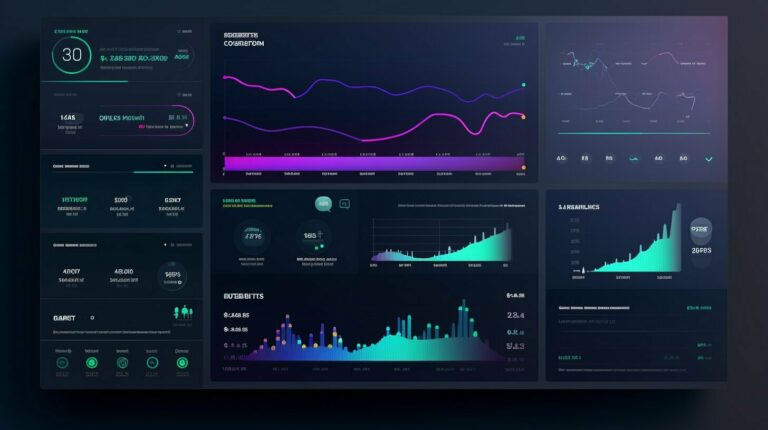Node.js streams are an essential part of data processing and handling in Node.js applications. Streams allow you to efficiently move data through your application one piece at a time, rather than loading it all into memory at once. This makes it possible to handle and manipulate large datasets without impacting your application’s performance.
There are four types of streams in Node.js – Readable, Writable, Duplex, and Transform streams. Each type serves a different purpose and is used for various operations within your application. Understanding the different stream types and how to work with them is crucial to developing efficient and effective Node.js applications.
Key Takeaways:
- Node.js streams are essential for efficient data processing and handling in applications.
- There are four types of streams in Node.js – Readable, Writable, Duplex, and Transform streams.
- Each stream type serves a different purpose and is used for various operations within your application.
Understanding the Stream API
Now that we have an introduction to Node.js streams, let’s dive into the Stream API. This API provides a powerful set of methods and events for working with streams. With this API, we can create, read from, write to, and manipulate stream data.
The Stream API consists of four types of stream objects:
- Readable streams: allow us to read data from a stream
- Writable streams: allow us to write data to a stream
- Duplex streams: allow us to read from and write to a stream
- Transform streams: allow us to modify or transform the data as it passes through the stream pipeline.
Let’s explore some of the methods provided by the Stream API:
| Method Name | Description |
|---|---|
| stream.pipe(destination) | Allows us to connect two streams together, where the data from the source stream is piped to the destination stream. This is a convenient way to handle the flow of data between two streams. |
| stream.on(event, callback) | Registers an event handler for the specified event. Events can include “data”, “end”, “error”, and many others. We can use the callback function to handle the event and perform any necessary actions. |
| stream.write(chunk) | Writes a “chunk” of data to a writable stream. The chunk can be a buffer, string, or any other type of data. |
| stream.read([size]) | Reads a specified number of bytes from a readable stream. The “size” parameter is optional and determines the number of bytes to read. |
These methods are just a few of the many provided by the Stream API. By understanding these methods and events, we can effectively create, manipulate, and process data using streams in Node.js.
Exploring Stream Modules in Node.js
Node.js provides built-in modules that use streams for efficient data processing. Here are some of the popular stream modules:
| Module | Functionality |
|---|---|
| fs | Streams for reading/writing files. |
| http | Streams for sending/receiving data over the network. |
| zlib | Streams for compression/decompression using gzip, deflate, or zlib. |
Working with these modules is easy and can save significant amounts of memory and processing time. For instance, instead of reading the entire file contents into memory, fs.createReadStream() can read streams of data in chunks, making it more memory-efficient.
In the next sections, we’ll explore each stream module in detail and learn how to work with them effectively.
Readable Streams in Node.js
Readable streams are a type of stream that can be used to read data from a source. In Node.js, readable streams allow data to be read chunk by chunk, instead of all at once, which is especially useful for handling large or infinite data sets.
To consume data from a readable stream, developers can listen for the ‘data’ event, which is emitted whenever new data is available. Alternatively, they can use the read() method to manually fetch chunks of data from the stream.
Handling stream events is crucial when working with readable streams. Aside from ‘data’, other important events include ‘end’, which is emitted when all data has been consumed, and ‘error’, which is emitted when an error occurs during the stream processing.
Common use cases for readable streams include reading files, parsing data from external sources, or streaming large data sets over a network. For instance, the ‘fs’ module in Node.js provides a createReadStream() method for reading files as readable streams, while the ‘http’ module allows developers to make HTTP requests and receive responses as readable streams.
Developers can also create custom readable streams using the Readable class provided by the ‘stream’ module in Node.js. This allows them to implement custom data sources and set the data flow rate, buffer size, and other stream options as needed.
Writable Streams in Node.js
Writable streams in Node.js are used to write data to a destination, such as a file, network socket, or database. They are essential for tasks like logging, data persistence, and scaling applications that require efficient data processing.
Creating a writable stream is easy with the built-in ‘fs’ module. For instance, to write data to a file, we can use the fs.createWriteStream() method and specify the file path and encoding:
const fs = require(‘fs’);
const writeStream = fs.createWriteStream(‘example.txt’,{‘encoding’ : ‘utf8’});
We can then write data to the stream using the write() method:
writeStream.write(‘Hello World!’);
We can also handle events triggered by the writable stream, such as ‘finish’ when all data has been written, or ‘error’ when an error occurs during writing:
writeStream.on(‘finish’, () => {
console.log(‘Data has been written successfully.’);
});
writeStream.on(‘error’, (err) => {
console.error(err);
});
In addition to the ‘fs’ module, writable streams are also used in the ‘http’ and ‘net’ modules for network communication and request/response handling.
With writable streams, we can perform a wide variety of tasks, such as writing to files, transmitting data over the network, or transforming data before storage. Writable streams provide a flexible and efficient way to handle data in Node.js applications.
Duplex Streams in Node.js
Duplex streams are a type of stream in Node.js that can both read from and write to streams. They provide a convenient way to handle bidirectional communication, protocol handling, and network socket programming.
Creating a duplex stream in Node.js is simple. You can use the duplex module to create a new duplex stream:
const { Duplex } = require('stream');
const myDuplexStream = new Duplex({
read(size) {
// read data from stream
},
write(chunk, encoding, callback) {
// write data to stream
}
});
Here, we create a new duplex stream called myDuplexStream by using the Duplex constructor. We define two methods, read and write, to handle reading from and writing to the stream, respectively.
One common use case for duplex streams is network socket programming. In this scenario, a duplex stream can be used to handle data transfer between clients and servers in real-time. For example, a chat application could use duplex streams to transmit messages between users.
Duplex streams can also be used for protocol handling. For instance, a protocol that requires both request and response messages can be implemented using a duplex stream.
Overall, duplex streams provide a powerful tool for handling bidirectional communication and protocol handling in Node.js applications.
Transform Streams in Node.js
In Node.js, transform streams are a type of stream that can modify or transform data as it passes through the stream pipeline. They are a powerful tool for manipulating data on the fly and can be used for a variety of purposes, from data encryption to compression and serialization.
Transform streams have both a readable and a writable side, and they are designed to work in conjunction with other streams in a pipeline. As data flows through the pipeline, each stream can modify or transform the data before passing it on to the next stream in the pipeline.
Node.js provides several built-in transform streams, including the zlib module for compression and decompression, the crypto module for encryption and decryption, and the stream-json module for parsing and transforming JSON data.
Custom Transform Streams
In addition to the built-in transform streams, you can also create custom transform streams in Node.js. A custom transform stream is simply a JavaScript class that extends the built-in Transform class and overrides some or all of its methods.
To create a custom transform stream, you need to implement the _transform() and _flush() methods. The _transform() method is called for each chunk of data that is passed through the stream, and it is responsible for transforming the data and pushing it onto the writable side of the stream. The _flush() method is called when the readable side of the stream has ended, and it is responsible for any final processing.
Tip: When creating custom transform streams, be sure to handle errors properly by calling the
this.emit('error')method if an error occurs during the transformation process.
Once you have defined your custom transform stream, you can use it in a stream pipeline just like any other transform stream.
Stream Pipes and Chaining in Node.js
One of the biggest advantages of using streams in Node.js is the ability to connect them together to create a pipeline using stream pipes. Stream pipes allow data to flow seamlessly from one stream to another, without requiring any manual intervention from the developer. This results in faster and more efficient data processing, as well as cleaner and more organized code.
The pipe() method is used to connect streams together in Node.js. This method takes a readable stream as its argument, and returns a writable stream. Any data that is read from the readable stream is automatically written to the writable stream. This makes it easy to create a chain of streams that can perform complex data processing tasks.
In addition to connecting streams using pipe(), it is also possible to chain them together using multiple pipe connections. This allows data to flow through multiple streams in a specific order, with each stream performing a different task. For example, you could have a readable stream that reads data from a file, a transform stream that encrypts the data, and a writable stream that writes the encrypted data to a database. By connecting these streams together using pipe(), you can create a powerful and efficient data processing pipeline.
Conclusion
In conclusion, Node.js streams provide a powerful tool for efficient data processing and handling. By breaking data into smaller chunks and processing them in parallel, streams can significantly improve performance and reduce memory consumption.
Throughout this article, we’ve covered the different types of streams in Node.js, including readable, writable, duplex, and transform streams, along with their functionalities and use cases. We’ve also explored the Stream API, built-in stream modules in Node.js, and advanced techniques like stream pipes and chaining.
We encourage readers to experiment further with Node.js streams and incorporate them into their own projects. With the knowledge gained from this article, developers can write more efficient, scalable, and robust Node.js applications.







